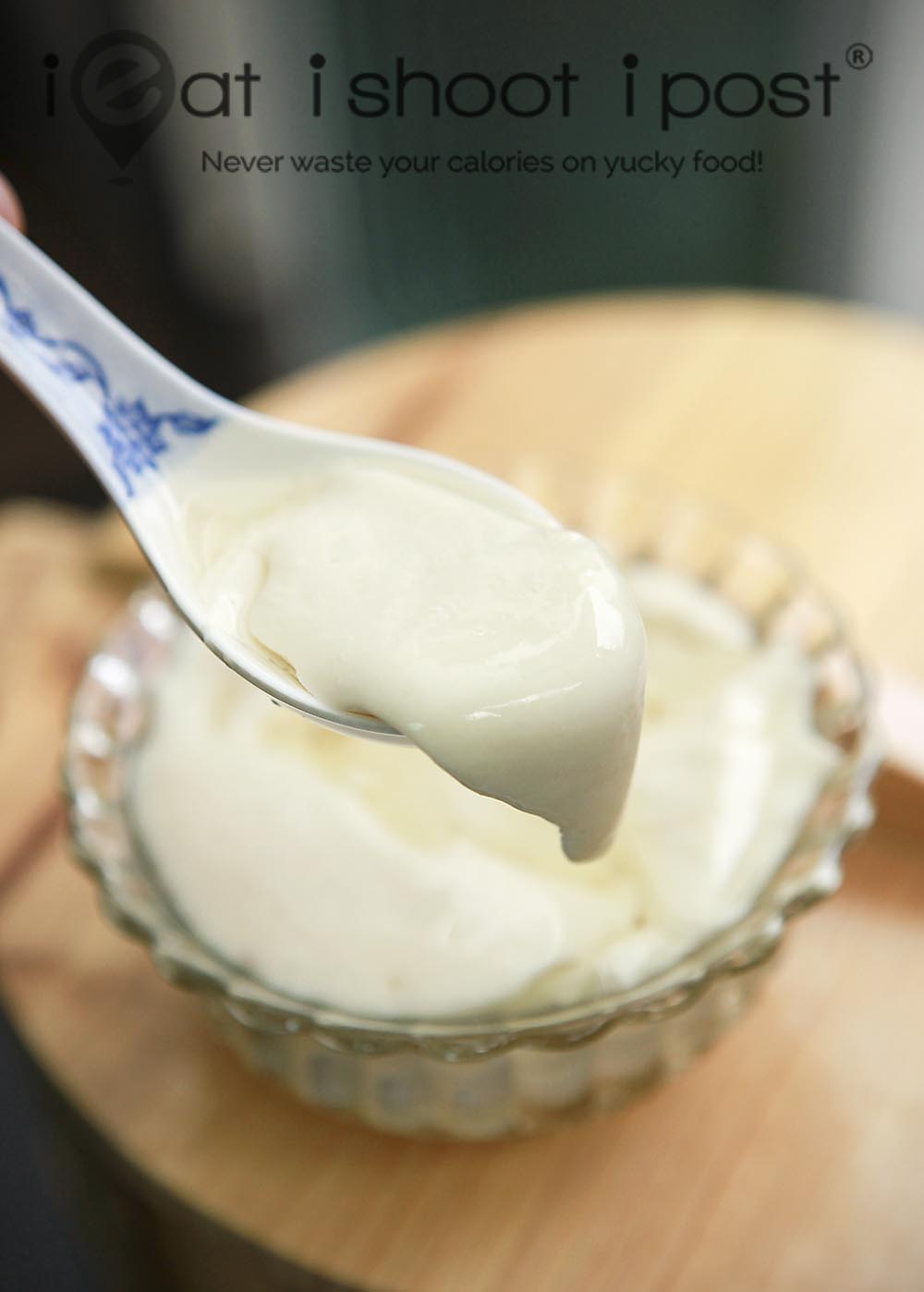
Why Bother?
You might be wondering, “Why bother to make Tau Huay when it is so cheap and you can buy it just about anywhere?” Well, I can think of three reasons. First, there is a certain “Wow” factor about Tau Huay especially if you can serve it fresh at home to your friends. Secondly, when you make your own Tau Huay, you can use organically grown soybeans to ensure that you get the best tasting and nutritious Tau Huay. Thirdly, once you mastered this skill, you can start to experiment with many interesting twists like adding vanilla pods, green tea or even Baileys to the soymilk. Oh, did I mention that Tau Huay is my wife’s all-time favourite dessert? All these years and I am still trying to impress her.
In this post, I hope to share with you what I have learnt about Tau Huay making so that you too can make Tau Huay as smooth as those in Dim Sum restaurants right in your own at home.
According to our polls last year, Tau Huay is Singapore’s favourite dessert. There is a certain level of mystique surrounding this, most traditional of Chinese dessert whose secret seems to be closely guarded by a select few. Yes, there are lots of bean curd stalls sprouting up all over the island selling fresh Bean Curd, but there are only a few stalls that can achieve a level of mystique like Rochor Bean Curd whose Tau Huay is regarded by many to be the best in Singapore. Part of the mystique surrounding Rochor, apart from the family rivalry, is its use of the traditional Gypsum powder or Shi Gao to make the Tau Huay. Gypsum, which has been traditionally used for more than 2000 years and is partly responsible for producing the 1.3 billion Chinese today, has been having some bad rep for being the cause of kidney stones. So for some people, eating Tau Huay made with Gypsum is like eating Fugu where you suspect that it might kill you but heck, it’s so good you’d take a risk. (More about this point later)
Although I like the smooth texture of Rochor Bean Curd, I have always felt that there is a lack of soybean fragrance in the bean curd. Most of the best Bean Curds I have eaten have been in Dim Sum Restaurants (overseas mostly), including the Si Chuan Dou Hua restaurant which in my opinion sells one of the smoothest Bean Curd in Singapore. For me, a great Bean Curd must not only be smooth, but it has to be firm enough to be chiselled and at the same time, there must be a fragrant beany flavour. Since I can’t get this Tau Huay unless I go to a Dim Sum restaurant, I decided that I would try to make it myself at home and try to debunk this Bean Curd myth once and for all. After all, there are only two ingredients in Tau Huay: Soybeans and coagulant. So it can’t be all that difficult right?
Wrong!
Bean Curd making is really more like a science than an art. I say this categorically after I have been trying to make Bean Curd almost every day for over a month. It is true that Bean Curd is basically soybean milk that has been curdled. But as I have found out (the hard way), there is a technique involved which needs to be followed religiously. This is a dish that a Chemist will be able to do very well! If you think about it, the process of turning a bean into a jelly is akin to what they are doing in Molecular Gastronomy nowadays. So, it is not far fetched to say that Bean Curd is one of the earliest forms of Molecular Gastronomy!
So I decided to make my own Tau Huay
As with many things nowadays, my search for a Tau Huay recipe started with an internet search. If you google “How to make Tofu Fa” you will get to see quite a few recipes. I think I must have read almost every site there is on making Tau Huay. The recipe from most sites seems to be quite standard. It calls for 250 grams of soybeans processed with 2 litres of water, filtered and boiled, then added to 1 teaspoon of gypsum powder and 1 teaspoon of cornflour. Some use a shortcut method which means that they buy ready-made soybean milk and just add the coagulant. I have tried many of these recipes but even when I succeed in getting the soymilk to set, the texture of the bean curd was a far cry from what they serve in the best Tau Huay places.
After two to three weeks of near consistent failure, I was about to give up and leave Tau Huay on its hallowed altar. It was then that I decided to pluck up the courage to ask Linda from Si Chuan Dou Hua Restaurant if she would be willing to give me a few pointers on how their Dim Sum chefs make their famous Tau Huay. To my surprise, Linda responded quickly with a recipe which I could try at home! After that, I managed to pick up a few more tips from Chef William of Copthorne King’s Hotel and also Chef Han of Meritus Mandarin, while filming for Buzzing Cashier. That was really the turning point of my Bean Curd adventure and after a few successful pots of Tau Huay, I have now reached a point where I am confident enough to pen down all the important points which I have learnt, so that whoever wants to make Tau Huay can achieve it in a much shorter time than I did. I hope that Tau Huay enthusiasts and experts out there can also chip in and add onto the pool of knowledge by writing what you know in the comments section.
So rather than giving you just a recipe, I am going to try to list down the some important tips on Tau Huay so that you can also work out what went wrong when your Tau Huay doesn’t set properly. Let me encourage you, you will fail a few times, but the numerous failures only makes the success sweeter.
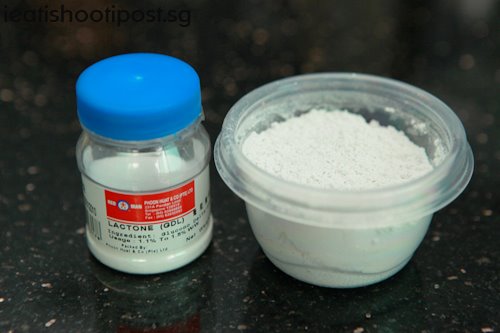
The coagulants: Lactone and Gypsum
About the Coagulants: Gypsum and Lactone
Before we lose the readers who do not want to make their own Tau Huay, just a quick word on the coagulants. In Singapore, there are essentially two coagulants you can buy. The more traditional is Gypsum powder which is essentially Calcium Sulphate, a chemical which occurs naturally as rock. It is the same stuff that you make plaster walls out of, which is why a lot of people believe that taking too much calcium will lead to kidney stones. This is true. BUT you have to consider that when you make Tau Huay, you are adding around 1000mg of calcium sulphate to every litre of soymilk. Since the daily requirement of calcium for an adult is 1000mg, you will need to take four bowls of Tau Huay in order to get enough calcium for the whole day. If you want to grow some kidney stones, you will have to exceed this amount by quite a bit and do that for an extended period of time before you have some kidney stones which you can show off on an Xray!
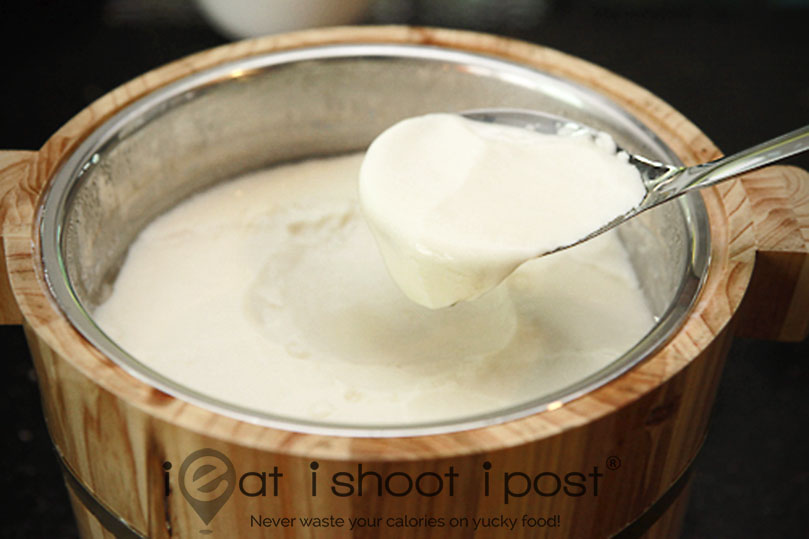
Gypsum is available at your friendly neighbourhood medicinal shop (Yo Chai Tiam). But you have to be careful as there are two versions. The Gypsum that you want is the “cooked” version. If you buy the “raw” version, which is used in Chinese medicine as a “cooling” agent. Your Tau Huay will not set and you will be very frustrated, wondering what happened. (I learnt that the hard way too). Incidentally, if you buy “cooling water”, that is essentially water with a bit of Gypsum dissolved in it. The cooked Gypsum looks a bit greyish and more grainy than the raw Gypsum.
The other coagulant you can buy is Glucono Delta Lactone (GDL) or Lactone for short. This is available from Phoon Huat. If you speak to some Bean Curd makers, they might mention that they use fruit pectin to make their Tau Huay. That is essentially what Lactone is called in Chinese. You can read it on the label itself. Lactone is the more popular coagulant that is supplied to most stalls selling bean curd as it is easier to use. This is also a “natural” coagulant since it is made by fermenting glucose. Lactone gives a smoother, more jelly-like texture, while Gypsum gives a softer, more custardlike texture. The thing that I don’t quite like about Lactone is that it does give the bean curd a bit of a sourish taste if you add too much of it. Gypsum is tasteless.
The following video will give a step-by-step account of how to make your Tau Hway at home. The recipe is from Sze Chuan Dou Hua and the technique is a summary of all the things I learnt from reading the net and talking to the experts.
Si Chuan Dou Hua Bean Curd Recipe:
500g Soybeans
2.5 litres water
3.5g Lactone (1/4 teaspoon is approx 1 g Lactone)
150ml water
It is interesting to note that the Si Chuan Dou Hua Recipe uses double the amount of beans compared to all the recipes on the internet.
Ieat’s Tau Huay Recipe:
500g Soybeans
2.5 litres water
2 tsp gypsum powder
150ml water
Commercial Tau Huay Recipe
250g Soybeans
2.5 litres water
2 tsp gypsum powder
1 Tbsp tapioca starch
150ml water
Steps:
Soak the beans overnight. Remove the outer skin and blend with water. Filter and squeeze the milk through a coffee sock. Boil the soybean milk for 10mins till fragrant, skimming off the foam. Dissolve the gypsum in water and add to the pot. Filter the soybean milk and then pour while its hot directly into the pot. Do not stir. Leave to set for 50mins. Serve with syrup.
NB: If you have a soya milk maker, then the whole process is quite simple! Just add your hot soya milk to the gypsum powder and you get tau huay in 50mins.
Important Notes:
1. The quality of beans will affect the taste of the bean curd. So since you are going to put all that effort into making your own Tau Huay, go and buy some nice organic beans!
2. By removing the skin, you get rid of that waxy taste. This step is optional, but since you want to make your Tau Huay, you might as well spend another 5 minutes doing this.
3. Some recipes tell you to cook the slurry first then filter. But traditionally, soybean milk is filtered then cooked. There is a good reason for this. Heat deactivates some of enzymes in outer layers of the bean. These enzymes are actually needed to produce that beany flavour. The westerners don’t like this but we Asians do. So, if you buy Soymilk produced in the US, you always find it doesn’t taste like the soymilk we are used to. That is because, when they process their soymilk, they will blanch the beans first the deactivate the enzyme that gives the beany taste. I have cooked it both ways and I find that you should just stick to filter then cook, as it is easier and gives a better fragrance.
4. It is vitally important that the soymilk is stirred and brought to the boil slowly to avoid burning the milk. Burnt Tau Huay is yuckly! (You can tell I am talking from experience right?)
5. It is important to simmer the milk for 10 minutes after you bring it to a boil in order to bring out the full flavour and fragrance of the soy milk.
6. The best temperature to coagulate the soymilk is 85 degrees Celcius. Don’t pour boiling soymilk directly into the coagulant. There will be too many bubbles and it will affect the texture of the Bean Curd. If you do not have a thermometer, let it rest for 5 minutes before pouring it in. When you pour, you are trying to produce turbulence so that the coagulant mixes with the milk properly. Don’t stir the milk once it is poured as coagulation starts almost immediately.
7. You can tell almost immediately if your Tau Huay is going to work. If the surface looks nice and smooth, either you are ok or there is too little coagulant. If it breaks ie precipitates to solids and water, then you have put too much coagulant. If you have too little coagulant, your Tua Huay will be like a thick milkshake.
8. Using a cloth to cover the bowl will prevent condensation droplets falling onto the surface of your Tau Huay.
9. The behavior of Lactone is different from Gypsum. It is more forgiving when it comes to texture, but not taste. If you add too much lactone, it just gets firmer but the taste is sour and quite unpalatable. I have found that 1 teaspoon of Lactone is roughly equivalent to 2 teaspoons of Gypsum.
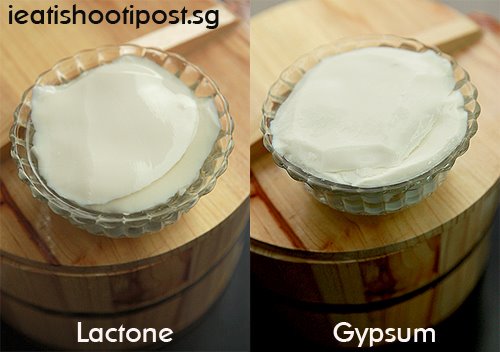
11. Gypsum has a very narrow window of success. Too little and the soybean milk just remains a thick liquid. Too much and the milk curdles and you can forget about your Tau Huay and proceed to drain the water and press it to make Tau Kwa. The window in between where the Tau Huay sets like silk is very narrow. So it is vitally important that you measure your beans and coagulant precisely. Do use a proper measuring teaspoon rather than a teaspoon that you use to stir your coffee. And remember 1 tablespoon is equal to 3 teaspoons, not 2.
12. Tau Huay is made by coagulating soybean protein. So the amount of bean protein to coagulant is critical. The amount of water can be adjusted to the texture you want. So if you find that your Tau Huay is too hard, add more water, but keep the amount of bean and water constant. By far the most important point in making Tau Huay is the ratio of the bean to the coagulant.
13. A lot of the recipes on the net call for the addition of Potato Starch or Cornflour. I haven’t figured out exactly why because the recipe that I use does not have it and the texture is excellent. The only reason I can think of is that it is used to thicken the milk in recipes that uses a smaller bean to water ratio.
14. I have found that it is important to keep the temperature at around 85 degrees during the coagulation period. This is no problem if you are making 5 litres of Tau Huay, but if you are doing 1 litre or even half a litre, then it is vitally important that you buy one of those rice warmers so that the temperature does not drop too fast. I find that it is easier to make at least 2 litres at one go. When you play with small amounts like 250mls because you don’t want to waste the soymilk, your margin for error when measuring the coagulant is very narrow.
15. If you wish to skip the laborious work of making your own soymilk you can buy soymilk from stalls that make their own milk. Then you have to work out the amount of coagulant based on the observations I provided in point 11. That is because different stalls might use different amount of beans and the machines used in extracting the soya milk might differ. If you use soymilk like off the supermarket shelves, do note that they usually add extra soybean oil and emulsifiers to give it that creamy texture.
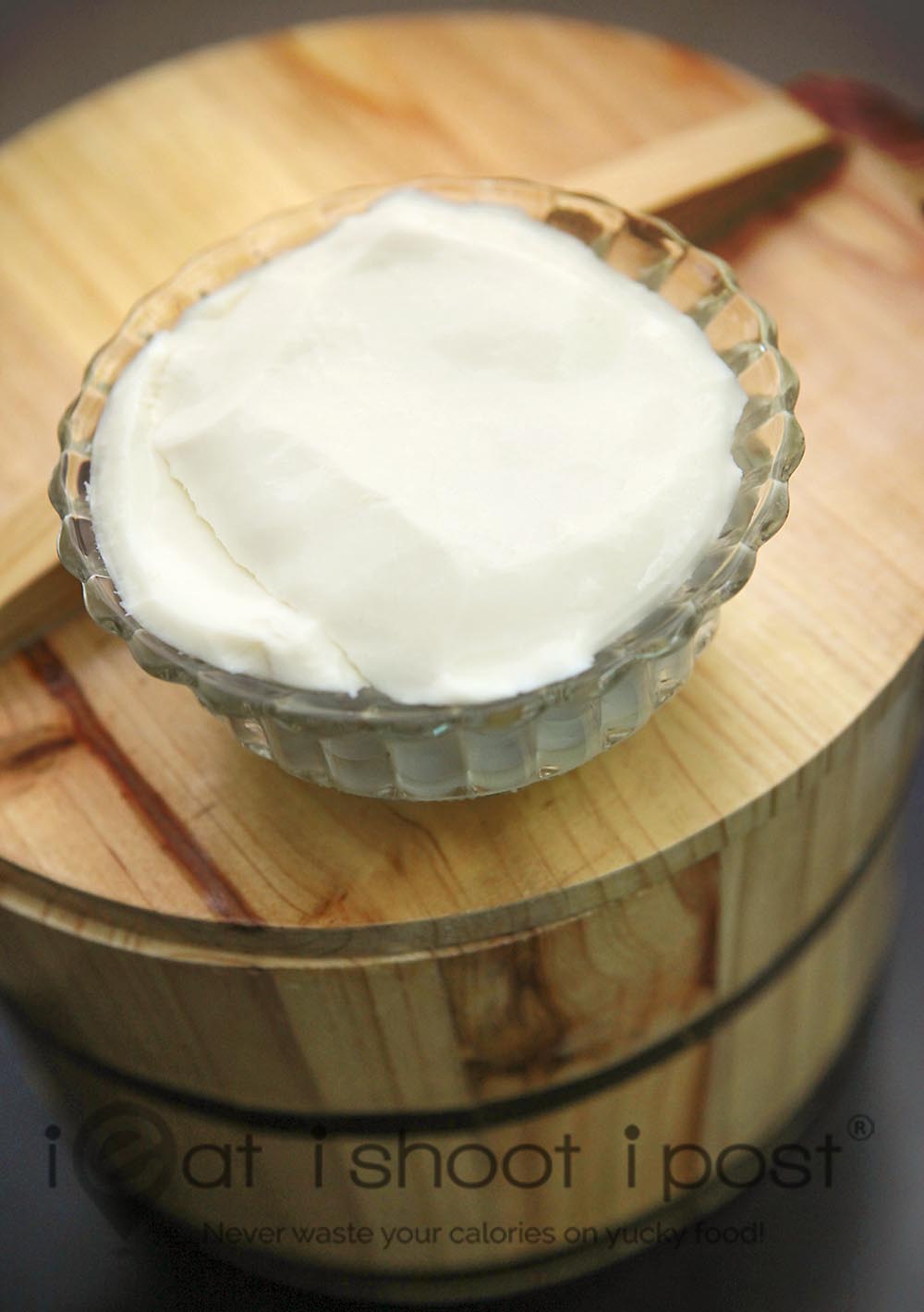
Conclusion
It is my hope that this post will enable anyone out there to make good Tau Huay. I don’t think my Tau Huay is quite perfect yet, but it is good enough as a starting block to work towards perfection. I hope that some enterprising person might just start making Tau Huay with the texture of Rochor’s but with a nice lingering beany taste and a bouquet that you can savour. It would be great if we can get a Tau Huay that can rival the best in Hong Kong right here in our Hawker centres! I don’t think it is too difficult as it just calls for a bit of passion and better quality beans.
Now, if you have been patiently reading my post till this point and are feeling a little overwhelmed by the amount of work it takes to make a good Tau Huay, but still wish you could just pop into the kitchen and whip up something quick. Then this is what you do. Buy some Sobe brand unsweetened soymilk. Measure out 300ml of soymilk and add 200ml of water to make 500ml. Put it in the microwave for around 6 mins until it starts to boil. Let it settle for a few minutes and then add it to 1/4 teaspoon of Lactone that has been dissolved in water. It is not as great as the recipe above, but it will satisfy that craving especially if you are overseas and the nearest Tau Huay stall requires a passport to get to!
I look forward to hearing some good reports from you and please write in the comments to share what you have learnt or if you have additional points to add.
Acknowledgements
Many thanks to Linda from Si Chuan Dou Hua Restaurant who graciously shared her recipe with us! If you are too lazy to make your own Tau Huay, this is one of the best Tau Huays you can find in Singapore!
Update: 21 Jul 2009
Finally managed to buy a proper packet of “Cooked” Gypsum Powder! Haven’t tried it yet, but it looks a bit greyish instead of pure white, so it should be right. After all, it says 熟石膏 on the packet, so it should be right. But really can’t guarantee anything until I try it.
Oh btw, I had one failure last week when trying to make a batch of Tau Huay. I made the soybean milk in the morning and tried to coagulate it in the afternoon, but it came out rough instead of smooth. I suspect it has something to do with leaving the soybean milk for too long. Chef Han from Meritus mentioned once before that the making of Tau Huay must be a continuous process. The next day I made another batch using the same Gypsum Powder but this time I did not stop in between and it came out beautifully. Does anyone here have a similar experience?
You can buy this gypsum powder at San Teck Soon Medical Hall at Hong Lim Complex, #01-53. it costs $6.50 and will last you forever!
Other related traditional dessert recipes:
Hainanese Kaya
Orh Nee
Cendol
Chin Chow
Kueh Bingka Ubi
Kueh Salat
Chiffon Cake
Mango Sticky Rice
Char Siu Bao
Other places to eat Tau Huay:
Whampoa Soya Bean and Grass Jelly
Teck Seng Soya Bean Milk
Rochor Original Beancurd
Beancurd City
Disclosure: Some links above are affiliate links, meaning, at no additional cost to you, we will earn a small commission if you click through and make a purchase.



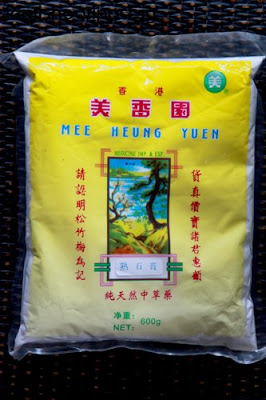
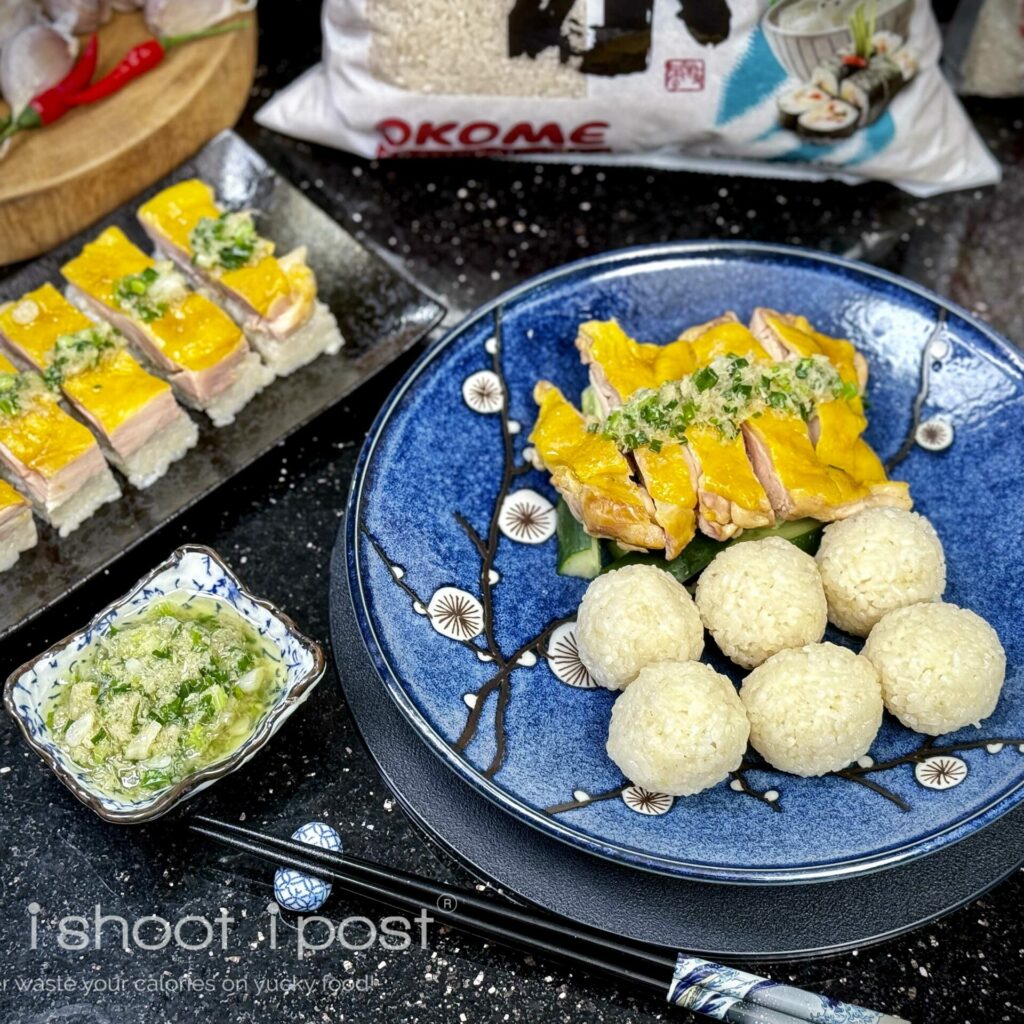

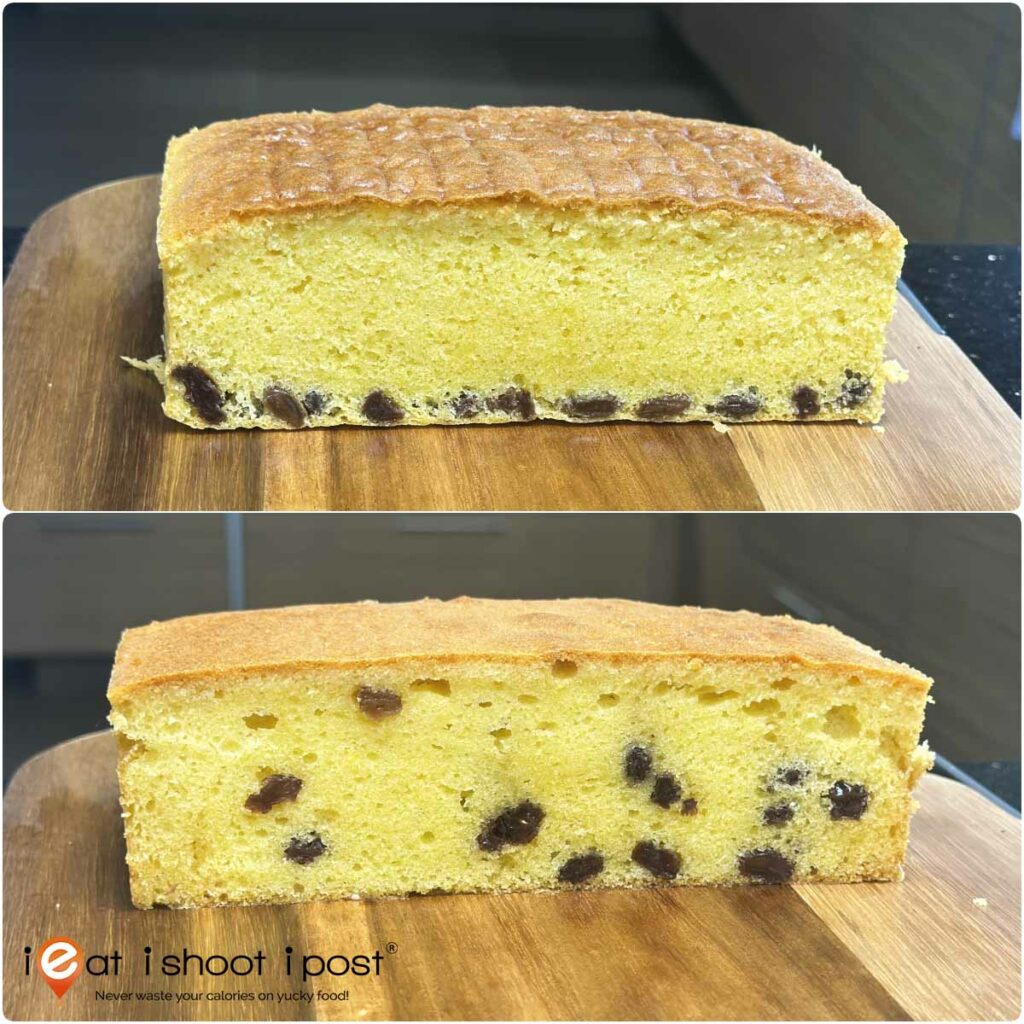
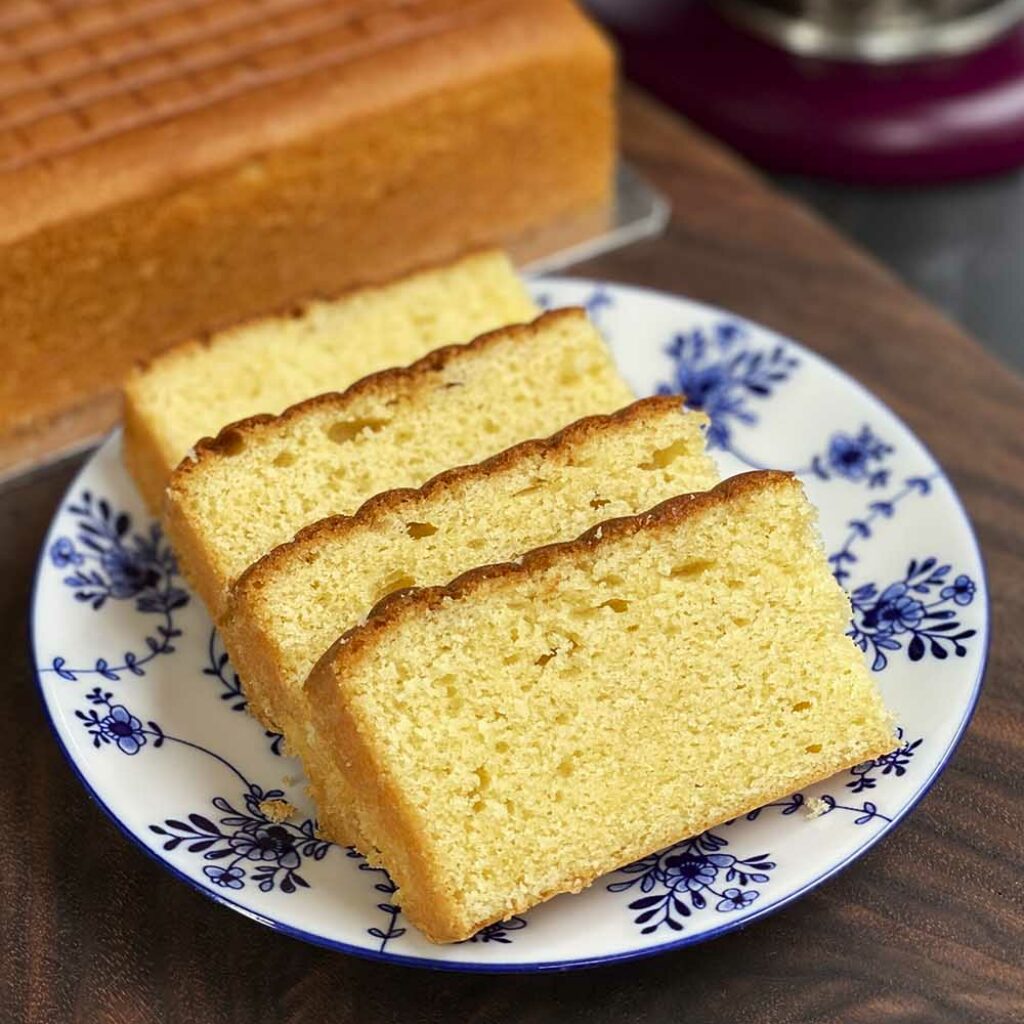
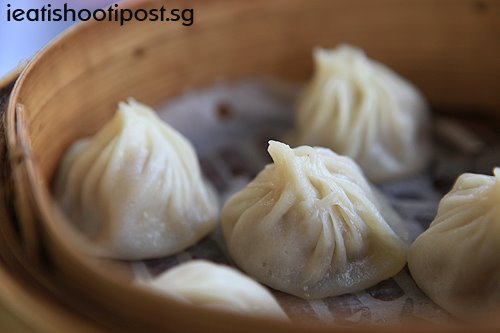

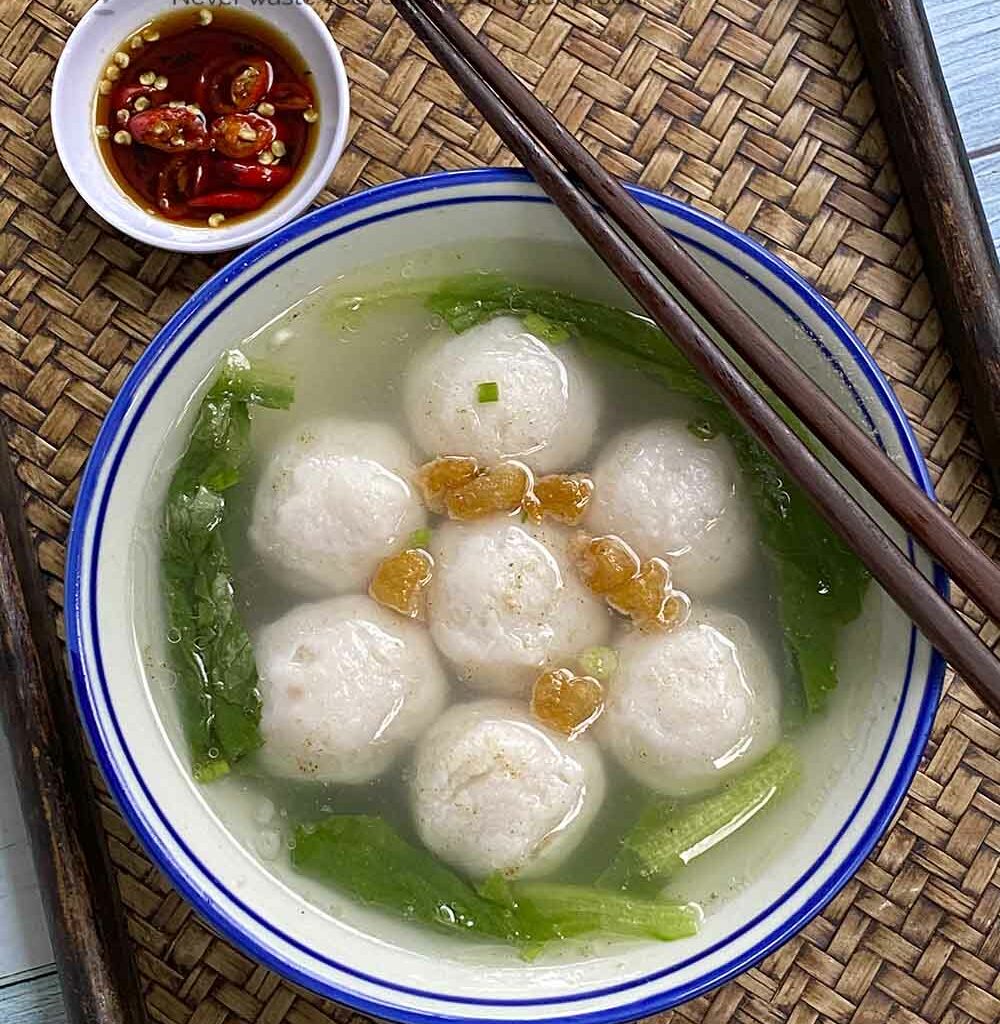



I’m not sure where the sugar syrup comes in?
The sugar syrup is added to the bean curd when you are serving it.
Found your blog on how to make tofu hua to be the best as you give a detailed description of the coagulants and how they work and the results they produce. Your detailed description on how to make this dessert and reasonings behind each step were very helpful. I live in Canada but I was able to purchase both coagulants in the US. Asian grocery stores do sell the gypsum but I have yet to find the GDL here. I have attempted to make the tofu hua with friends’ recipes using gypsum before but they always failed or I didn’t get that silky texture. So I looked on line for other recipes and they were all similar, just another recipe. What was I doing wrong? Maybe I should pour the milk at a higher distance above the mould, maybe adjust the amount of coagulant, or maybe the ratio of beans to water is important. So when I found your recipe, I was very excited to try it again but this time using GDL. Success twice. Glad I found you, thanks.
Thanks very much for your comment and glad you succeeded with your bean curd!
Hi, could you please convert the 2 teaspoon of gypsum into grams? I am getting alot of mixed answer, some say 1tsp = 3g others 4-5g. I just dont want too use too much gypsum as needed.
Awesome blog by the way. Saves alot of time and frustrations. Having failed 5x, i was about to quit until i found your blog. Would like to give it a shot.
Thank you very much!
thank you for listing all the necessary key points towards making a great tofu hua at home! a few questions… 1) do i blend the 500g soya beans (soaked overnight) with the 2.5 litres of water then filter? 2) once filtered, do i use entire amount of soya bean milk to boil? 3) the 150ml of water,… is that used to dissolve the lactone?tyvm!
Yes to all three
Hi, it is very useful to get to know so must knowledge from your blog. May I know is it possible to make the soy milk from soya bean powder? those cooked soya bean powder but not the raw soya bean powder. I have been trying to make Tau Huey by using the soy milk made from soya bean powder, but it turns out to be like sandy texture , sort of like semi “transformation” to actual Tau Huey. Am wondering is it the ratio of my bean powder vs water or the coagulant ratio problems? Could you please advice?
I don’t know! I guess it depends on how the soybean powder is made.
Hi Dr Tay, i tried making the tau huay just now but it turned out rough not smooth like your picture. I used gypsum powder bought from kwong cheong thye.
Wondered what went wrong when i followed your steps to the T.
Any precious advice? Thank you!
Regards,
Alicia
Yes, its frustrating isn’t it. Did you ask Kwong Cheong Thye if the powder is specifically used for Tau Huay? The other problem is the proportion of beans to water. If it is off by a few percent, its gone!
Oh, you don’t keep it. Best eaten immediately after making or the tau huay will not be as silky smooth.
Hello! I’m curious, unless I missed it in the article, when you say 2 teaspoons of gypsum do you mean 2 packed teaspoons or lightly filled teaspoons?
The video is not working, can I view the video in youtube or other website?
Thank you
Yeah, I have to reshoot everything. Sorry about that.
Thanks! Glad you liked it! No I haven’t really played with any other gelling agents.
I tried using yeo’s uht soy bean milk and lactone, after experimenting for a few times, I’ve hit a block..
Using 250ml of soy milk and 1/4 tsp of lactone, the outcome is not firm enough (firm on first look, once I tried to scoop it, it turns into a thick slurry) yet has a sourish taste..
Any advice on how to fix this or what might be the problem?
You need to make your own soy milk.
I followed the recipe to a T and it worked!!
However, when I tried to cut everything in half, it didn’t work.. I understand that cause of the half amount, the heat doesn’t keep well and that affects.. But I put it in the rice cooker on keep warm and still didn’t work..
Any advise if I want to do a half amount?
Make a whole amount and give half to your neighbour.
Thanks for your feedback!
Where did you buy this?
phoon huat. There are many branches in Singapore
Hi, am wondering where I might be able to find the rice warmer in SG and about how much does it cost?
Hi, you can buy from Sia Huat. Should cost something like $20
Thank you very much for your reply! I’m currently living overseas, but have been missing this so so much. 🙂 Just made soy milk ytd. Am so gonna buy the rice warmer when I visit SG next month!
Actually, you can just use your rice cooker or any heavy pot which you first warm with hot water. But a rice warmer is nice.
Hi Leslie, have you ever tried using the House brand tofu mix from Japan? I used to get it from the grocers here and make tau huay years back but it is no longer available unfortunately. Thought if you made a trip to Japan, you could get it to try. The only thing which you need to do is further dilute the soya bean mix than suggested to makeba more tender tau huay like what we are used to locally. It looks and tastes really good.
Also, while you are in Japan, go to Tokyu Hands and find this coagulant that’s a clear liquid. It seems to be made from something from the sea (seaweed?) from what I gather. Could be the carrageenan like those added to whipping cream. I found that the texture wasn’t great unless you are using it to make rustic Japanese style tofu. Also, there is a bitter edge to it. But still I thought I’d bring it up here.
Ah, thanks for sharing!
Thank you for your very detailed instructions and tips! Huge help! We call this taho in our country and a staple breakfast for kids and adult alike. My family misses this so much and I want to try my hand at doing this. Are there other stores selling gympsum powder aside from San Teck Soon? I appreciate your reply! ????
You can try asking at the medicinal halls
Hi Leslie, thanks for your great explanation.
I’ve made your recipe for 1L,2L,3L and 5L of soymilk. Unfortunately,the experiment for 5L soymilk was unsuccessfully. The texture of benacurd wasn’t good. It’s crack and a lot of water inside. Is there any correlation with the stockpot I used while pouring soymilk? Fyi for 1-3L I used the same stockpot. I’m very frustated because I’ve made 5L for 3 times and all of them was unsuccessfully ☹
Oh, I have never made so much! Not sure how it can be done.
Hi Leslie, I live here in the Caribbean and would like to make my own bean curd. I’ve been searching where to buy the coagulant but no luck. I’m also hesitant as I might buy the wrong one. Any recommendations where to buy? Would you know if the place where you bought yours will sell online/overseas? As mention that I live overseas using the soy milk to shorten the process would you recommend using Lactone and not gypsum?
Thanks
You can try to buy it online: https://shopee.sg/FOOD-GRADE-500GM-1KG-HALAL-GDL-GLUCONO-DELTA-LACTONE-i.219535647.7353958173?gclid=CjwKCAjw8-78BRA0EiwAFUw8LJZbl2KDy4r467cY0uxd8EBCRoYqm7M-5FwdBguiECISRwDEORfU2xoCQJ4QAvD_BwE
Hi Dr Leslie! I came across your recipe and decided to try it out. Success!!!!!! Rochor standard for real.
I was concerned about the coagulant to soy milk ratio because your recipe doesn’t specify how much soy milk should be obtained after boiling and filtering. Because I somehow ended up with only 2L of soy milk (threw away too much sediment?) at the end, I reduced it to 3g of GDL and 128ml of water. Waited with trepidation for the outcome and was so happy it was perfect. Really satisfied my craving away from home! Thank you!! P.S. I also spent an obscene amount of time dehulling the soybeans. Any tips for doing it in 5min?
Hi Sheralyn,
So good to hear of your success. To dehull the soy beans I just rub them with my hand and sort of shake them in the water. The hull with then float and I quickly throw away the water. No need to be 100%. Can also try not removing the hull and see if you can accept the taste. Most commercial places don’t bother.
I just wanted to say Thank you Leslie. It is a success today with the recipe. With 500 grams of soybean and 2500 grams of water. I yielded ~ 2000 grams of soy milk. I used 2 grams of GDL in 150 grams of water. The temperature of the soymilk at pouring was ~ at 175 to 180 F.
The Tofu pudding was smooth and firm. Not a whole lot leakage of liquid in the pot after the Tofu pudding is spooned.
Dr. Leslie, you use a very nice bamboo rice warmer pot for your tau huay. As I will follow everything you use to the T, may I know where you bought it and the size of the bamboo rice warmer. I googled online and either nobody rated it or some said theirs arrive cracked and dented. Thank you.
I think I bought mine from Sia Huat years ago! Use your rice cooker or any insulated pot.
Hi Leslie, so excited I found your site on making tau huay😃. I was searching for answers to troubleshoot why my tau huay tasted smooth but does not appear silky in looks. (I didn’t use the recipes you shared on the site but will definitely try them!) Any comments on what happened to my smooth but not silky tau huay? Thank you so much!
Hi Dinny, not sure how you define smooth but not silky?
Hi Leslie, it tasted smooth when eaten but didn’t look shiny and silky. In fact it looked a little “heavy and sandy” in appearance. Perhaps I didn’t strain enough (I strained only once) and/or the ratio of beans to water was incorrect. There wasn’t enough water. Btw, what blender would you recommend to blend the soybeans? Also in your previous response regarding the bamboo pot, is pouring into rice cooker good enough? Thanksss!
Pouring rice in the rice cooker should be fine! Yes, make sure you strain through cloth!
Hi Leslie, I responded yesterday but not sure you received it. It tasted smooth as in melted in your mouth but had the appearance of roughness. I believed I didn’t strain enough (only strained once) and the ratio of beans to water was not sufficient. Gonna try your recipe to the “t” the next time I make tau huay! Thanks for your blog!
Why my bean curb taste sour using Lactone?
Yes, it is a little more acidic. You cannot use too much!
Thank You for sharing the recipe. One of the ingredients in your Commercial Tau Huay is tapioca starch. When do you ad it to the recipe. Thank you again.
Don’t need to use Tapioca starch in this recipe
Hello. Ive been making this for a while now. But today, i accidentally added too much water. Will it become firm tofu? That’s what I noticed, it instantly curdled after pouring soymilk onto gdl mixture. Thank you
Oh, it might not curdle properly. Probably can put in blender and make thick soya milk!
Hi, do you have the weights in grams for gypsum powder? I don’t have access to a teaspoon but I do have a measuring scale!
1 tsp of gypsum powder is approx 3g.
I tried both the Si Chuan and commercial recipe you shared. Both are very smooth n melts in your mouth. I jus find that the texture is a little bit on d soft side if eaten hot. It kind of breaks into smaller parts when syrups is added. Am I doing it wrong? Is it the water that is making the texture soft?
I also tried to make 1kg of beans by doubling the recipe. This time using a keep warm plastic canister. Sadly it turned out watery and failure.
Making tau huay is an art, you just need to try again and again until you get the right texture! When you get it right, it shouldn’t break apart so easily. You will need to experiment and make adjustments to the recipe until you find the right combination. Start by reducing your water by 10% and see if the texture improves.
Thanks. will try it out.